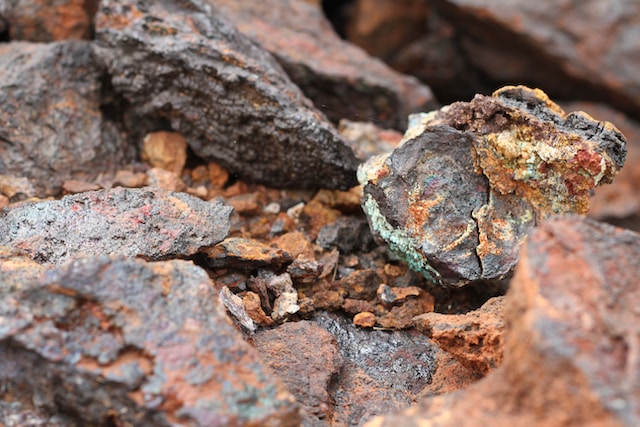Introduction
Critical minerals are in particular demand for the transition to low-carbon and renewable energies to attain the goals of the Paris COP21 agreement. The energy transition is expected to boost global demand for critical minerals, predicted to double by 2030 and quadruple by 2050, and generate annual revenues of up to US$400 billion.[1] Over the next two decades, the estimated demand for critical minerals will soar to over 40% for copper and rare earth elements, 60-70% for nickel and cobalt, and nearly 90% for lithium towards clean energy technologies.[2] Electric vehicles and battery storage have already overtaken consumer electronics as the biggest consumers of lithium.[3] By 2040, they are likely to overtake stainless steel as the biggest final consumer of lithium.[4]
The Republic of Burundi holds significant reserves of critical minerals and counts deposits of rare earths, lithium, and 6% of the world’s Nickel reserves.[5] On August 4, 2023, the Country enacted a new mining code that introduced several innovations designed to promote the country’s development. Among other things, the mining law recognizes the paramount role of critical minerals and allows the State to define, through an ordinance, the terms and conditions for developing and trading critical minerals.[6]
The booming demand for critical minerals spells out an opportunity for Burundi to take its place on the table and establish itself as a major producer of these minerals on the African continent and Worldwide.
Moving from “Common” to “Unique”
Since its adoption in 2009 by the African Union, the African Mining vision, inter alia, prioritizes upstream value addition through industrial process development of critical mineral resources.[7] To better position the continent with the upcoming high increase in demand for critical minerals, the African Union launched the African Union Commodity Strategy that emphasizes the crucial importance of critical minerals resources and how they can be leveraged for inclusive structural, social, and economic development as part of the 2030 Agenda.[8] This strategy underlines the key role of implementing policy to promote value addition of commodities at the national level and to better engage in the industry’s global value chain. On this basis, the African critical minerals strategy is being formulated by the African Development Bank. It calls upon abundant source countries to harvest critical minerals in producing and distributing low-carbon energy and their use in low-carbon mobility and electric vehicles.[9] In so doing, it sets the tone for policies and industry frameworks to ensure an efficient processing of critical minerals to meet the demands of the continent and national energy transition and harnessing the sustainable and responsible use of these resources by source-rich African countries.
Simultaneously, the wheels are in motion on the continent, with initiatives of legal frameworks that consider the particularity of critical minerals in the energy transition and economic growth. For example, The Democratic Republic of the Congo, one of Burundi’s neighbors, is a leading producer of cobalt, an essential mineral used in electric vehicle batteries and renewable energy plants. The government has increased royalties from 2.5% to 3.5% and up to 10% for critical minerals, including cobalt.[10] The country has also agreed with Zambia to develop the battery minerals and electricity value chain. This joint initiative will create a cross-border special economic zone and a hub of expertise for battery technologies.
Being predictable … Catching Two Birds With One Stone
Considering these precedents and current developments, creating a specific policy presents a unique and imperative chance to guide upstream mining of critical minerals in Burundi towards a more favorable trajectory. Although not exhaustive, the first step is recognizing that critical minerals are nuanced. Burundi is home to several critical minerals, including Nickel, rare earth, and lithium, with varying use patterns in the energy transition. Therefore, policy should encourage long-term obligations for upgrading and refining critical minerals into manufactured products, which situates the country in the discourse of mineral supply chains with global suppliers. This will increase the earning potential for reducing socio-economic vulnerability, which is one of the main sources of an unbalanced development layer for source-rich countries.
Secondly, considering that Burundi’s extensive mineral resources promise to leverage the country’s strategic position during the transition to renewable energies, the policy has to consider energy transition features at the national level and climate change challenges to set the country on the right trajectory.
Finally, critical minerals operations are highly damaging to the environment due to their intensive energy use, greenhouse gas emissions, and polluting waste.[11] This entails that social and environmental features and impacts should be considered while adopting the aforementioned policy to ensure sustainable mining practices.
Conclusion
Hence, policymaking concerning the exploitation of critical mineral resources, destined to assume ever greater significance in the future, holds the potential to foster sustainable development that aligns harmoniously with societal and environmental concerns. Concurrently, as the prominence of critical minerals and their extraction continues to ascend, the efficacy of political governance becomes increasingly pivotal.
[1] International Energy Agency, World Energy Outlook 2022 (Paris, 2022).
[2] International Energy Agency, African Energy Outlook special report 2022.
[3] ibid 3.
[4] IEA. (2022). African Energy Outlook. Paris: International Energy Agency.
[5] Prudence Bararunyeretse, “Les exploitants miniers burundais à l’épreuve de la fiscalité et de la responsabilité sociale’ [2014] 2.
[6] Law No. 1/19 of 04 August 2023 amending Law No. 1/21 of 15 October 2013 on the Burundi Mining Code 2023, s 7 (5).
[7] Busia Kojo and Charles Akong, “The African mining vision: Perspectives on mineral resource development in Africa [2017]8 (1) JSDLP 145,192.
[8] African Union, Draft African Union Commodity Strategy and Action Plan. Addis Ababa: Africa Union (2021).
[9] African Development Bank Group, Draft African Green Minerals Development Strategy Approach Paper (2022).
[10] Kalantzakos Sophia, “The race for critical minerals in an era of geopolitical realignments’ [2020] 55(3) Int.Spect. 10.
[11] Archibong EI and Afolabi AP, “From colonial exploitation to renewable transition: A critical analysis of Africa’s energy paradigm’ [2023] EJOSDR 7, 4.
